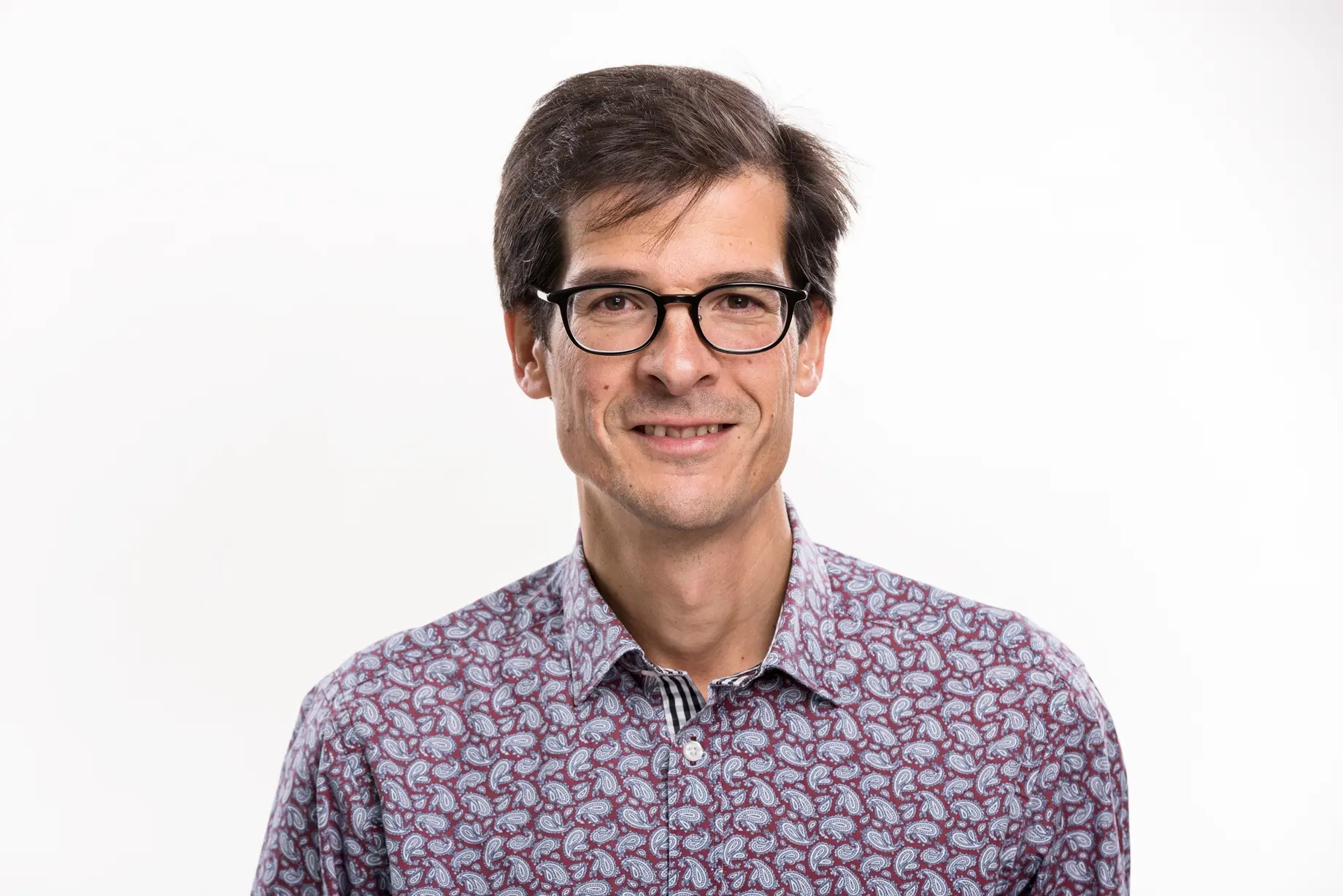“We need interconnection and cooperation”
In his research at the Institute of Sustainable Development (INE), Vicente Carabias focuses on sustainable energy systems. In this interview, he shares his vision of a smart city and explains how each individual can contribute to its development.

The term “smart city” has been in use for a few years. How would you define it?
Vicente Carabias: For me, the most important thing is that we can raise the quality of living in cities and at the same time use less energy and fewer resources. We can only achieve this goal if we are prepared to put new innovation processes into practice. To do this, stakeholders and technologies from all possible fields of application have to interact and work together – technology is only truly useful if it is implemented effectively. There is huge potential, especially in digitalisation. For example, with the help of ICT solutions, we can create smart energy and transport systems. This is why organisations such as the ITU and the UNECE prefer to talk about “smart sustainable cities” - this represents their goals more accurately.
What direction are developments taking?
As renewable sources of energy, storage options and smart grids or smart homes slowly become established, more and more opportunities for interaction are arising. For example, decentralised energy systems and electro-mobility need to be interlinked. In general, there needs to be better coordination between energy supply and energy demand. The Internet of Things, in particular, could help us monitor the demand for and consumption of energy. I would even go a step further and ask: why not create a kind of “city cockpit” and an open city data platform that would make the data collected available for further innovations? I can also see the potential for city engagement platforms, where the stakeholders and general public involved can take part in the development of their smart city. We need interconnection and cooperation!
How much cooperation and interconnection is going on in research?
The ZHAW School of Engineering took an important step last year: the interdisciplinary research platform Smart Cities & Regions allows us to pool competencies and experience relevant to the development of smart cities on an inter-institutional basis. When you look at the project partnerships formed within the Swiss Competence Centers for Energy Research (SCCER) or at conferences such as SmartSuisse, the Smart City World Congress, or the current Expo 2017 in Astana, you can see how effective the cooperation is between researchers, both within Switzerland and on the international level. These partnerships also contribute to the development of smart cities.
If you could build a smart city from scratch, what would it look like?
My smart city would have a high building density with buildings of varying heights, so that it could produce surplus energy. I’m talking about plus-energy houses which offer a comfortable living environment, with vertical gardens and roof-top green spaces. People would live in multi-generational communities, follow an energy-efficient, 2000-watt lifestyle and share household appliances and spaces. They would form citizens’ associations, for example for photovoltaic systems or urban farming, and they would use decentralised energy storage systems. Mini-networks would coordinate energy supply and demand between buildings and also between electric vehicles. Sensors and smart metres would provide the relevant information. This urban transformation would gain strong acceptance because all the stakeholders involved would take part in the innovation process. Mobile applications, smart chips, the Internet of Things and self-learning, automated systems would make life easier. Independent public transport would be supplemented with Bicar sharing systems to cover the last mile of a journey. Fossil fuels would no longer be used, the roads would belong to self-driving electric buses, Bicars, e-bikes, bicycles and pedestrians. An extensive traffic management system would ensure trouble-free mobility. Electricity-driven flying vehicles would back up the transport system. The city would be characterised by a recycling economy, clean technology, green havens and renewable energy – which would all guarantee a high quality of living!
What can we city dwellers do today to help your vision of a smart city become reality?
Lead an energy-efficient lifestyle and be open but constructively critical towards those new technologies and social innovations that will support the transformation process necessary to create a smart city! Take advantage of this year’s ZHAW Technology Night to learn about smart cities and get involved in the topic. Later, take more individual responsibility, use digitalisation appropriately, and, when the time comes, support living labs in your city.